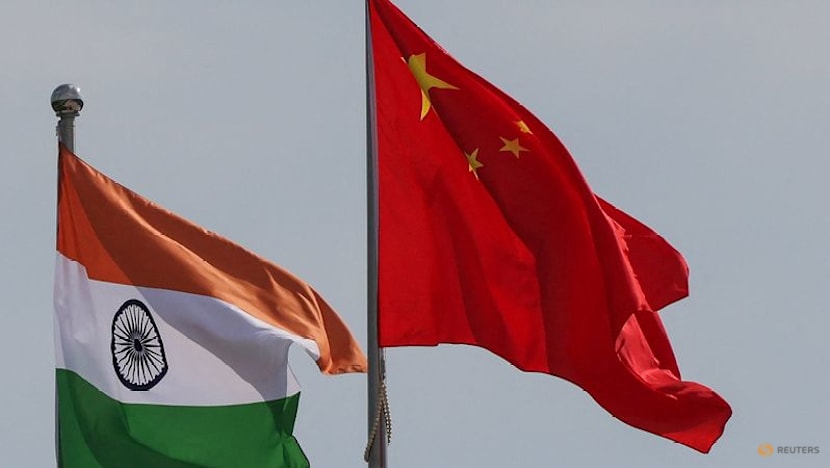India considers easing certain Chinese import curbs amid growing reliance: Sources

National flags of China and India fly in Tianjin, China on Aug 30, 2025. (File photo: Reuters/Maxim Shemetov)
NEW DELHI: India's trade ministry and a government think-tank are pushing to ease certain tariff and non-tariff curbs on Chinese imports, three government officials said, acknowledging the country's growing reliance on Chinese raw materials for industrial and export growth.
They are seeking measures, including allowing anti-dumping duties to lapse on certain products, while considering tariff cuts on raw materials used in sectors such as leather and engineering goods where domestic capacity remains limited, the sources said.
New Delhi is caught between balancing trade relations with Washington - which has imposed punitive tariffs on imports from India - and Beijing, which until earlier this year had slowed supplies of key goods, including fertiliser, to India.
REBUILDING TIES AFTER 2020 BORDER CLASH
In August, India and China agreed to boost business links as the neighbours rebuild ties damaged by a 2020 border clash.
"A consensus is emerging within the government and the industry that, while negotiating a deal with Washington, India needs to fine-tune its trade policy, including trade relations with China," one of the government officials said.
Both the commerce ministry and the NITI Aayog - a government policy think-tank - have backed industry calls to cut import tariffs on raw materials at inter-ministerial meetings, a second official said, noting countries such as Vietnam import Chinese raw materials at zero duty, putting Indian manufacturers at a disadvantage.
However, the final decision on duty cuts rests with the finance ministry, the official said, noting cheaper Chinese raw materials have boosted exports of Apple's smartphones, pharmaceuticals, chemicals and engineering goods.
The sources spoke on condition of anonymity as details are not public. India's commerce ministry didn't immediately respond to an email seeking comment.
RISING CHINESE IMPORTS
Responding to industry demands, the commerce ministry last month extended advance authorisations for quality-controlled inputs from 180 days to 18 months - easing critical Chinese raw material imports.
India's imports from China rose more than 16 per cent to more than US$11 billion in September, with imports touching US$91 billion in the first nine months of 2025, up from about US$80 billion a year ago.
Exports rose modestly to about US$15 billion, widening the trade gap in Beijing's favour, commerce ministry data showed.
The government would also not renew anti-dumping duties on items such as axle beams, steering components and high-tenacity polyester yarn, another government source said.
However, India's trade remedies authority has launched new anti-dumping probes on imports such as cranes, toner cartridges and solar cells from China after local complaints.
"This is not about abandoning self-reliance policy,” the official said. “It’s about recognising that growth needs global inputs - and China remains too central to ignore.”
GROWING DEPENDENCE ON CHINA
India's reliance on critical Chinese supplies has deepened in a number of categories.
Imports now account for 91 per cent of embroidery machines, 92 per cent of saw blades, 72 per cent of inverters and half of UPS systems, said Ajay Srivastava, founder of Global Trade Research Initiative, a Delhi-based think-tank.
Nearly 90 per cent of antibiotics, silicon wafers, flat-panel displays, and 80 per cent of laptops are also imported from China, according to Global Trade Research Initiative.
The trade deficit hit nearly US$94 billion in 2024 and could widen to US$120 billion to US$130 billion in two to three years, driven by rising imports of electronics components, chemical and industrial inputs, the second government source said.
New Delhi was also considering easing Chinese investment curbs case-by-case, where national security risk was minimal, said the official, a senior government adviser, referring to a foreign investment policy that tightened rules for nations sharing land borders with India, mainly China.















